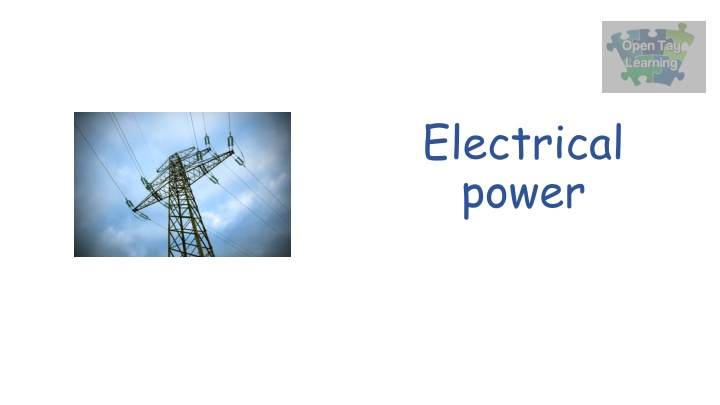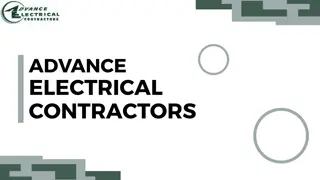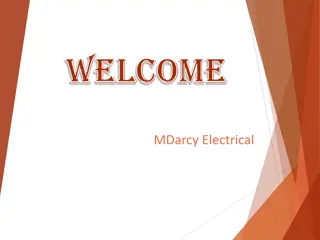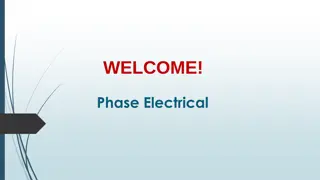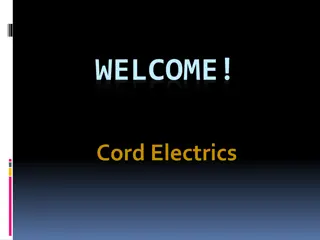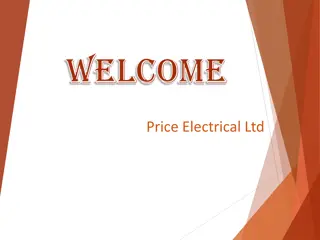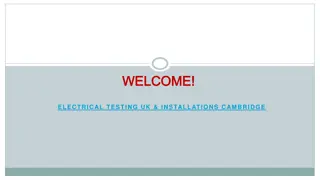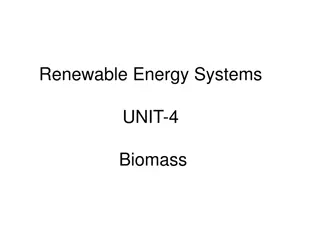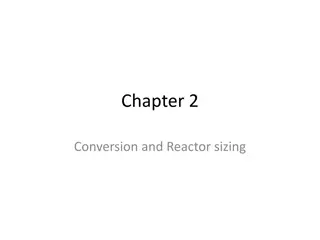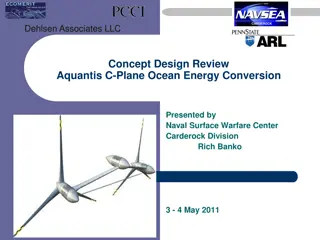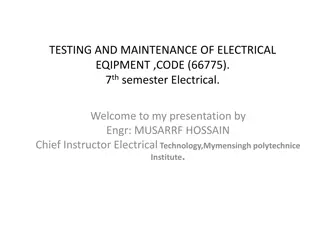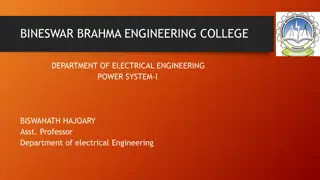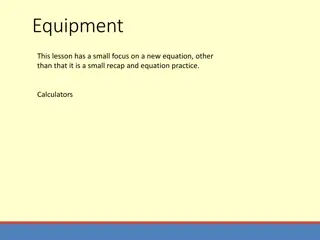Electrical Power and Energy Conversion
Concepts of power and energy in electrical systems. Learn how electrical devices convert energy into different forms and understand the relationship between power, energy, and electricity consumption. Discover the importance of power ratings and energy monitors in monitoring electricity usage.
Download Presentation

Please find below an Image/Link to download the presentation.
The content on the website is provided AS IS for your information and personal use only. It may not be sold, licensed, or shared on other websites without obtaining consent from the author.If you encounter any issues during the download, it is possible that the publisher has removed the file from their server.
You are allowed to download the files provided on this website for personal or commercial use, subject to the condition that they are used lawfully. All files are the property of their respective owners.
The content on the website is provided AS IS for your information and personal use only. It may not be sold, licensed, or shared on other websites without obtaining consent from the author.
E N D
Presentation Transcript
Electrical power
Learning intentions On this lesson you will: state that power is a measure of the energy transferred every second state that different electrical appliances use different amounts of electrical power
Electrical devices convert electrical energy into other forms of energy, such as sound, heat, light and movement. An electric kettle changes electrical energy to heat energy and sound energy. The heat energy is the useful energy and the sound energy is wasted energy.
Electrical systems and devices transfer energy into useful and wasted energy. Energy (E) is measured in joules (J). Power (P) is a measure of how much energy is used each second. Power is measured in watts (W).
How much electricity am I using? Some electrical items use a lot of electricity. Others don t. As a rule, those with moving parts or which produce heat use much more than those that produce light or sound. We can use power ratings to compare how much power different appliances use.
How much electricity am I using? Most appliances which plug into mains electricity will have a ratings plate which gives information about the power it uses. Appliances like irons or kettles which heat up usually have high power ratings.
Electrical power ratings Every electrical appliance has a power rating which tells you how much electricity it needs to work. This is usually given in watts (W) or kilowatts (kW). 1kW= 1000W
Energy monitors These are wireless devices that can tell you useful things like what your current energy use is costing you. The display can show how much electricity is being used at that moment, as well as how much was used last week or last month. Your energy supplier should provide an energy monitor if you have a smart meter, or you can by a separate energy monitor. This Photo by Unknown Author is licensed under CC BY-NC-ND
The cost of electricity Electricity is sold by the kilowatt-hour (kWh). ?????? ?? ???????? ???? = ????? ???? 1 ?? = 1 ?? 1 ????? ???? = ?????? ?? ???????? ???? ???? ????
Money saving tips When we pay our electricity bills, we pay for the energy we use so we can save money by either: Using appliances for less time. Using appliances which have a lower power rating. The best way to save money on your electricity bills is to make sure that appliances, lights and heating are switched off when not needed.
Money saving tips You can also: Use energy saving light bulbs where possible. Switch off lights when not in use. Do not leave the oven on when not cooking food. Only boil as much water as you need in a kettle. Switch off TV s, computers etc when not in use.
Safety You should know that you should be careful when using electricity around water. Also, fuses are used to make circuits safer. If too much current flows, then the fuse melts. This stops current flowing and makes the circuit safe.
